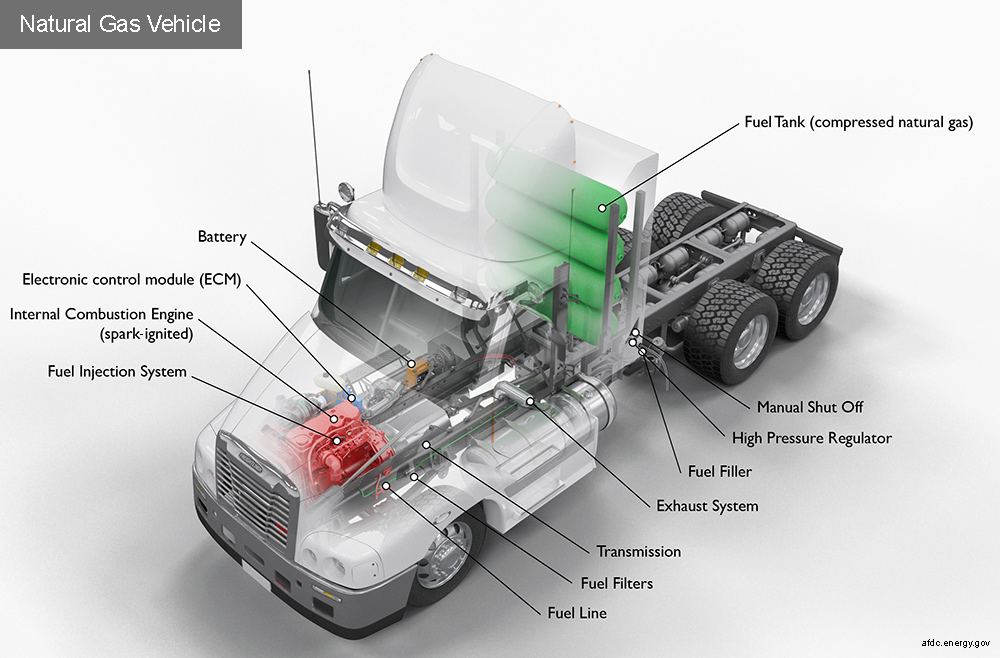How Do Compressed Natural Gas Class 8 Trucks Work?
Heavy-duty compressed natural gas (CNG) vehicles work much like gasoline-powered vehicles with internal combustion engines. Many heavy-duty natural gas vehicles use spark-ignited natural gas systems, but some systems use a diesel-like compression injection. In a spark-ignited system, the engine functions the same way as a gasoline engine. Natural gas is stored in multiple fuel tanks, or cylinders, typically behind the cab of the vehicle. The CNG fuel system transfers high-pressure gas from the fuel tank through the fuel lines, where a pressure regulator reduces the pressure to a level compatible with the engine fuel injection system. Finally, the fuel is introduced into the intake manifold or combustion chamber, where it is mixed with air and then compressed and ignited by a spark plug. Learn more about natural gas vehicles.
High-res image
Key Components of a Natural Gas Class 8 Truck
Battery: The battery provides electricity to start the engine and power vehicle electronics/accessories.
Electronic control module (ECM): The ECM controls the fuel mixture, ignition timing, and emissions system; monitors the operation of the vehicle; safeguards the engine from abuse; and detects and troubleshoots problems.
Exhaust system: The exhaust system channels the exhaust gases from the engine out through the tailpipe. A three-way catalyst is designed to reduce engine-out emissions within the exhaust system.
Fuel filler: A nozzle from a fuel dispenser attaches to the receptacle on the vehicle to fill the tank.
Fuel filter: This filter traps contaminants and other byproducts to prevent them from clogging critical fuel system components, such as fuel injectors.
Fuel injection system: This system introduces fuel into the engine's combustion chambers for ignition.
Fuel line: A metal tube or flexible hose (or a combination of these) transfers fuel from the tank to the engine's fuel injection system.
Fuel tank (compressed natural gas): Stores compressed natural gas on board the vehicle until it's needed by the engine.
High pressure regulator: Reduces and regulates the pressure of the fuel exiting the tank, lowering it to an acceptable level required by the engine 's fuel injection system.
Internal combustion engine (spark-ignited): In this configuration, fuel is injected into either the intake manifold or the combustion chamber, where it is combined with air, and the air/fuel mixture is ignited by the spark from a spark plug.
Manual shut off: Allows the vehicle operator or mechanic to manually shut off the fuel supply.
Transmission: The transmission transfers mechanical power from the engine and/or electric traction motor to drive the wheels.




